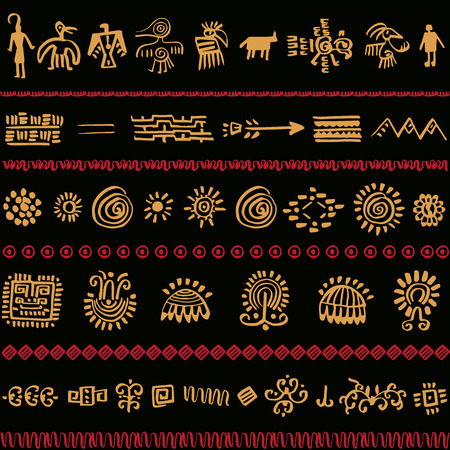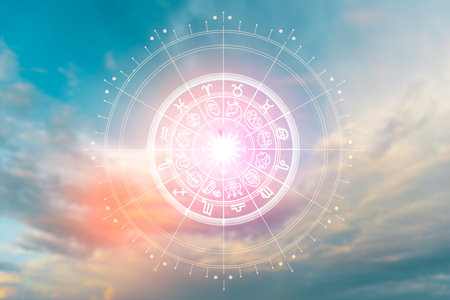Understanding Rahu and Ketu in Vedic Astrology
In the heart of Indian astrology, known as jyotish shastra, Rahu and Ketu hold a profound mystical significance that shapes the fabric of everyday life. These two shadow planets, also called chaya grahas, are not physical celestial bodies but powerful nodal points on the lunar orbit. Their energies are believed to be deeply karmic, representing the spiritual lessons and unresolved desires carried forward from previous lifetimes. In Vedic tradition, Rahu signifies ambition, illusion, worldly attachments, and the cravings that drive one’s material pursuits. Ketu, on the other hand, symbolizes detachment, enlightenment, past-life wisdom, and the spiritual liberation that every soul seeks.
The Influence of Rahu and Ketu on Indian Daily Life
Every aspect of Indian living—from family relationships to career aspirations—can feel the subtle impact of these planetary nodes. When Rahu or Ketu are prominent in a person’s birth chart (kundali), they can create periods of intense growth or challenges. These experiences may manifest as sudden changes, confusion, obsessions, or a deep urge to seek meaning beyond material success. In Indian households, it is common for elders to consult astrologers to decode the presence of Rahu and Ketu during significant life events like marriage proposals, business ventures, or religious ceremonies.
Karmic Lessons and Spiritual Evolution
The journey with Rahu and Ketu is ultimately about balancing material desires with spiritual progress. According to ancient texts such as the Brihat Parashara Hora Shastra, these shadow planets compel individuals to confront their deepest fears and attachments, paving the way for inner transformation. The cycle of karma—actions and their consequences—unfolds under their watchful gaze, encouraging seekers to reflect on their choices and move towards peace and harmony within themselves.
A Key Pillar in Indian Culture
Rahu and Ketu’s influence extends beyond personal horoscopes; they are woven into the collective consciousness of Indian society. Festivals like Ketu Jayanti and rituals at sacred sites such as Srikalahasti Temple in Andhra Pradesh highlight their enduring relevance. By understanding these energies through jyotish shastra, Indians find guidance in navigating challenges, fostering resilience, and nurturing hope for harmonious living.
Common Signs of Rahu-Ketu Dosha in Indian Households
Rahu-Ketu Dosha is often seen as a subtle but powerful influence that can disrupt the peace and balance within an Indian household. Recognizing its signs early helps families seek timely remedies and restore harmony. Here, we identify the classic indications of imbalance from a traditional Indian perspective, touching on spiritual, emotional, and practical experiences familiar to Indian families.
Spiritual Manifestations
- Disturbed Puja Practices: Members feel restless during daily prayers or lose interest in rituals that have been part of their family tradition for generations.
- Negative Energy Vibes: Frequent occurrences of unexplained accidents or mishaps in the home, leading elders to sense a vastu dosha or energetic disturbance.
Emotional & Mental Signs
- Unusual Anxiety: Persistent worries or fears without apparent cause, especially among children and elderly members.
- Family Discord: Increased arguments or misunderstandings among family members, even over trivial matters, creating emotional distance.
- Sleep Disturbances: Recurring nightmares or insomnia affecting more than one person in the house.
Practical Everyday Experiences
- Financial Instability: Sudden loss of wealth, unexpected expenses, or obstacles in career growth despite hard work.
- Health Issues: Repeated illnesses or chronic health problems that do not respond well to conventional treatments.
- Educational Setbacks: Children facing concentration issues or repeated academic failures despite sincere efforts.
Quick Reference Table: Common Rahu-Ketu Dosha Indicators
| Aspect | Significance | Typical Experience in Indian Homes |
|---|---|---|
| Spiritual | Lack of spiritual peace | Puja feels ineffective, sacred objects breaking accidentally |
| Emotional/Mental | Mood disturbances | Anxiety, frequent arguments, unexplained sadness |
| Practical/Material | Tangible setbacks | Financial losses, poor health, academic decline |
The Collective Impact on Family Life
The presence of Rahu-Ketu Dosha often manifests as a string of challenges affecting the entire household. It is not just one event but a pattern—spanning spiritual disconnection, emotional unrest, and practical struggles—that prompts Indian families to consult astrologers and seek remedial measures. Recognizing these signs is the first step toward regaining harmony and invoking auspicious energies back into the home.

3. Powerful Rahu Ketu Remedies from Ancient Indian Wisdom
Indias astrological heritage offers a treasure trove of powerful upaays (remedies) to pacify the challenging effects of Rahu and Ketu in ones kundli. These age-old practices, rooted deeply in our Bharats spiritual fabric, have been tried and trusted by countless seekers for centuries. Let us explore some of the most effective methods that blend tradition, spirituality, and practical wisdom for bringing peace and harmony into daily Indian life.
Traditional Rituals (Karmakand) Observed Across Bharat
Many families perform time-honoured rituals like Rahu-Ketu Shanti Puja at sacred temples such as Sri Kalahasti or Trimbakeshwar. Observing fasts on specific days—such as Saturdays for Rahu and Tuesdays for Ketu—are believed to reduce their malefic effects. Lighting a diya with mustard oil under a Peepal tree on Saturday evenings is an auspicious act practiced across North India to appease Rahu.
The Power of Mantras and Chants
Chanting ancient mantras is central to Indian astrological healing. Reciting the “Om Raam Rahave Namah” mantra 108 times every day, especially during Rahu Kalam, helps cool down Rahus fiery influence. For Ketu, chanting “Om Ketave Namah” with devotion during early mornings on Tuesdays is highly effective. Many also use the Navagraha Stotra composed by sage Vyasa to invoke planetary blessings holistically.
Practical Home Remedies from Every Indian Household
Simple remedies passed down generations have deep roots in every Indian home. Donating black sesame seeds (til), blue clothes, or urad dal on Saturdays calms Rahu dosha. For Ketu, offering seven grains or feeding stray dogs on Tuesdays is considered meritorious. Wearing gemstones like Gomed (Hessonite) for Rahu and Lahsuniya (Cat’s Eye) for Ketu—after proper astrological consultation—can channelise their energies positively.
Cultural Practices: Blending Faith with Daily Life
Our diverse Bharat celebrates festivals like Nag Panchami and Chaturthi with reverence towards serpentine deities linked to Rahu and Ketu, integrating faith with cosmic harmony. Even placing coconut or lemon under vehicles before journeys is believed to ward off negative planetary influences—a custom seen from Mumbai’s busy lanes to Tamil Nadu’s serene villages.
By embracing these traditional remedies—rituals, mantras, and simple household acts—we honour the timeless wisdom of our land while inviting peace and balance into our lives amidst modern challenges. Remember, these remedies are not just rituals but pathways connecting us with cosmic rhythms that shape our destinies.
4. Customised Remedies Based on Your Janam Kundali
In the vibrant tapestry of Indian astrology, the Janam Kundali (birth chart) is considered a sacred blueprint unique to every individual. When seeking effective Rahu Ketu remedies for peace and harmony, it is crucial to recognise that no two destinies are alike. The deeply rooted Indian tradition of consulting an experienced pandit or astrologer reflects our cultural reverence for personal nuances and cosmic influences. Through personalised analysis, you receive remedies that resonate with your soul’s journey and karmic patterns.
Why Personalised Consultation Matters
Generic solutions may offer temporary relief, but only a customised approach—shaped by your specific planetary positions—addresses the root cause of doshas or disturbances caused by Rahu and Ketu. This respect for individuality not only honours ancient wisdom but also ensures practical, long-lasting results in your daily life.
Benefits of Individualised Remedies
| Aspect | Personalised Approach |
|---|---|
| Accuracy | Suits your birth chart, ensuring effective results |
| Cultural Alignment | Honours family traditions and rituals specific to your lineage |
| Karmic Healing | Addresses past life influences revealed in your Kundali |
| Practicality | Recommendations fit your lifestyle and belief system |
Commonly Recommended Personalised Rahu Ketu Remedies
- Puja or homa tailored to your specific dosha and nakshatra
- Mantras and stotras recited at astrologically auspicious timings
- Daan (charity) of items related to Rahu or Ketu as per your birth chart requirements
- Wearing gemstones or yantras prescribed after detailed analysis
When you consult a learned pandit or trusted astrologer, they meticulously decode your Janam Kundali, identifying subtle planetary afflictions. Their guidance ensures you do not just follow generic rituals, but embark on a spiritual healing journey tailored exclusively for you—an approach that truly embodies the heart of Indian astrological tradition.
5. Incorporating Remedies into Modern Indian Lifestyle
Blending Rahu Ketu Remedies with Everyday Indian Life
Integrating Rahu and Ketu remedies into your daily routine can seem challenging, especially amidst the hustle and bustle of contemporary Indian cities or the grounded pace of rural Bharat. However, these ancient astrological practices can be adapted effortlessly to fit both urban apartments in Mumbai and traditional homes in Varanasi. By understanding your unique life rhythm and the cultural context around you, it becomes possible to weave these solutions seamlessly into your home, workplace, and family dynamics.
At Home: Creating Sacred Spaces for Harmony
Begin by dedicating a small corner or altar in your home for spiritual rituals—this could be as simple as a diya (lamp), incense sticks (agarbatti), and a copper vessel filled with water. Recite Rahu or Ketu mantras at sunrise or sunset; even five minutes of focused chanting can infuse your living space with calm energy. For those in busy cities like Bengaluru or Delhi, use early mornings before work to light incense or meditate on planetary yantras, setting a peaceful tone for the day.
At Work: Subtle Practices for Urban Professionals
Incorporate discreet remedies within your office environment. Keep a small gemstone or rudraksha bead associated with Rahu or Ketu in your pocket or desk drawer for protection and clarity. If you work remotely, place relevant yantras on your worktable or set reminders to chant affirmations during breaks. Sharing homemade sweet offerings (mithai) with colleagues on auspicious days strengthens positive energy without disrupting professional decorum.
Family Sphere: Involving Loved Ones in Rituals
Encourage family participation by organizing weekly pooja or group mantra sessions, especially on Saturdays and Wednesdays—days governed by Rahu and Ketu. In rural households, involve elders in narrating stories about planetary influences, thus preserving oral traditions while making remedies more relatable for children. Preparing sattvic meals together on significant astrological dates fosters unity and collective well-being.
Practical Tips for Seamless Integration
- Use mobile apps to track Rahu Kaal (inauspicious timings) and plan important tasks accordingly.
- Replace plastic containers with metal utensils like copper or silver for water storage as a remedy, blending health benefits with tradition.
- Cultivate Tulsi plants at home—watering them daily is both an act of devotion and a subtle remedy for planetary imbalance.
By approaching Rahu Ketu remedies not just as rituals but as mindful lifestyle choices, modern Indians—whether navigating crowded metros or living amid serene fields—can foster inner peace and harmony without compromising their contemporary aspirations.
6. Spiritual Stories and Real Experiences from India
Transformative Journeys: From Turmoil to Tranquillity
Across the vast lands of India, Rahu Ketu remedies have been a source of solace for countless souls seeking peace. The resonance of ancient wisdom has guided many through turbulent times, ushering in hope and harmony. Take the story of Mr. Rajesh Sharma from Varanasi, who struggled for years with career instability and family discord. Guided by a learned astrologer, he began regular Rahu Ketu pooja on Saturdays and adopted the practice of donating black sesame seeds at his local temple. Within months, Rajesh noticed a remarkable improvement in his professional life and relationships, crediting these simple yet profound remedies for his newfound stability.
Healing with Faith: A Mother’s Testimony
Mrs. Anjali Verma, a homemaker from Chennai, faced persistent health issues with her children, which doctors could not explain. On the advice of her elders, she started lighting mustard oil lamps during Rahu Kalam every week and recited the Durga Chalisa with unwavering devotion. Miraculously, her children’s health improved, and harmony returned to their home. Anjali shares that these traditional practices did more than heal—they brought a sense of spiritual connection and inner peace.
The Power of Collective Rituals: Community Harmony
In many Indian villages, entire communities come together during eclipse periods to perform group Rahu Ketu Shanti Homas. In Rajasthan’s Pushkar town, villagers recount how collective rituals during Chandra Grahan (lunar eclipse) have reduced communal tensions and brought prosperity after years of drought. Elders believe that shared faith amplifies the healing power of these astrological solutions, weaving a fabric of unity across diverse backgrounds.
Youth Awakening: Modern Indians Embracing Tradition
Sneha Joshi, a young software engineer from Bengaluru, initially dismissed astrology as superstition. But after facing repeated setbacks despite her hard work, she consulted a Jyotishacharya who identified a strong Rahu Dosh in her birth chart. By wearing an 8-faced Rudraksha mala and participating in Rahu Ketu dosha nivarana puja at Sri Kalahasti Temple, Sneha experienced not just career breakthroughs but also mental clarity and emotional balance. Today, she advocates for blending tradition with modern life for holistic well-being.
Divine Guidance: The Common Thread
These heartfelt testimonials echo a common truth: Rahu Ketu remedies are not mere rituals—they are bridges to self-awareness, resilience, and divine grace. The real stories of Indians from all walks of life remind us that with faith and perseverance, the ageless wisdom of astrology can illuminate even the darkest paths toward peace and harmony.
7. FAQs and Cultural Guidance for Rahu-Ketu Remedies
What are Rahu and Ketu in Indian Astrology?
Rahu and Ketu are shadow planets, known as Chaya Grahas in Vedic astrology. They do not have physical bodies but influence our lives through karmic energies. Their positions in the birth chart can bring challenges or blessings, depending on their alignment.
Are home remedies for Rahu and Ketu effective?
Yes, many traditional Indian households follow simple remedies like chanting mantras, lighting lamps, or offering coconut at temples. These practices connect you with positive vibrations and are time-tested across generations. However, faith and consistency matter most.
Do I need to visit a temple for these remedies?
Visiting temples is considered auspicious, especially on days like Rahu Kalam or during eclipses, but remedies can also be performed at home with sincerity. Offering water to Shivling or meditating with Om Namah Shivaya mantra are popular home practices in India.
Is fasting important for pacifying Rahu and Ketu?
Fasting on specific days like Saturdays (for Rahu) or Tuesdays (for Ketu) is common in Indian culture. It is believed to help cleanse negative energies and purify your thoughts. If health permits, even partial fasting or avoiding certain foods can be helpful.
Can anyone perform these remedies regardless of caste or gender?
Absolutely! Vedic wisdom says spiritual remedies are universal. Anyone seeking peace, harmony, or relief from planetary doshas can perform these rituals with devotion—no restrictions based on caste, gender, or background.
Are there any myths about Rahu-Ketu remedies?
A common myth is that only expensive pujas work. In reality, simple acts like feeding birds, donating black sesame seeds, or reciting Rahu-Ketu mantras daily carry great power when done selflessly.
How long should I continue these remedies?
There is no fixed timeline. Consistency is key—many people observe changes within 40 days of regular practice. Patience and faith are integral parts of Indian cultural belief systems regarding astrological solutions.
Cultural Tips for Best Results
Always begin remedies after consulting a trusted astrologer who understands your unique horoscope. Use clean utensils for offerings, wear modest clothes during rituals, and maintain a pure heart. Remember, the intention behind every act holds divine significance in Indian tradition.
If you keep these customs in mind and follow the guidance above, Rahu-Ketu remedies will truly support your journey toward peace and harmony in daily Indian life.

